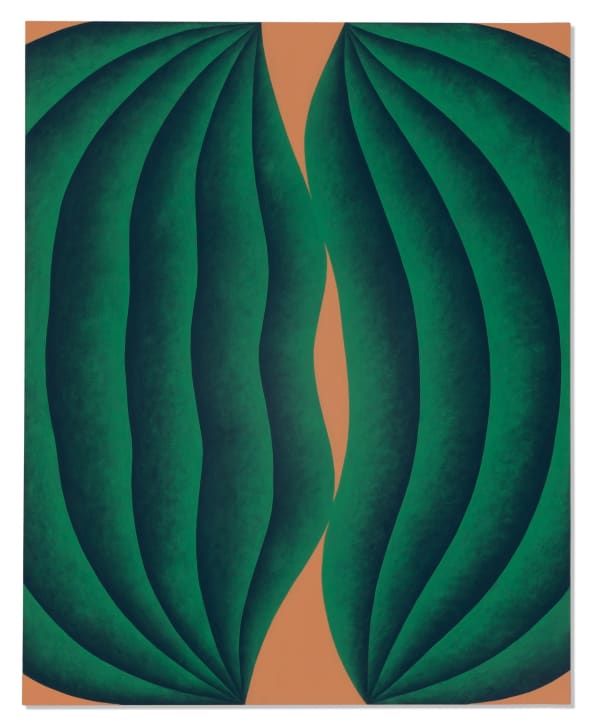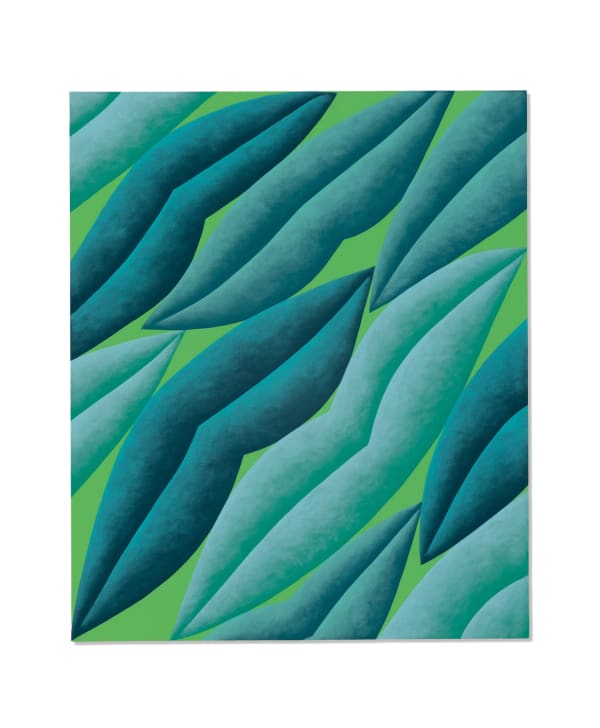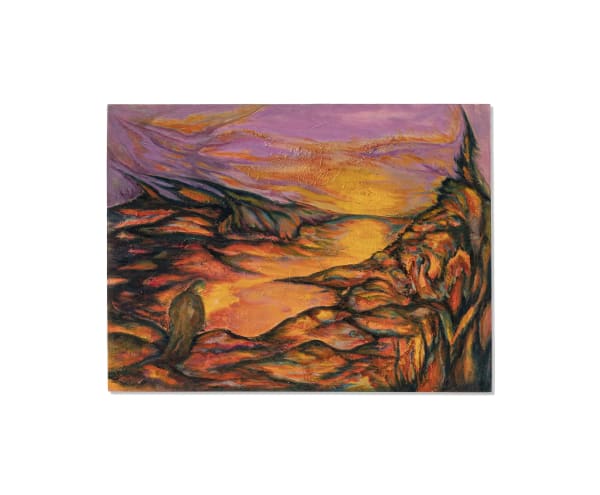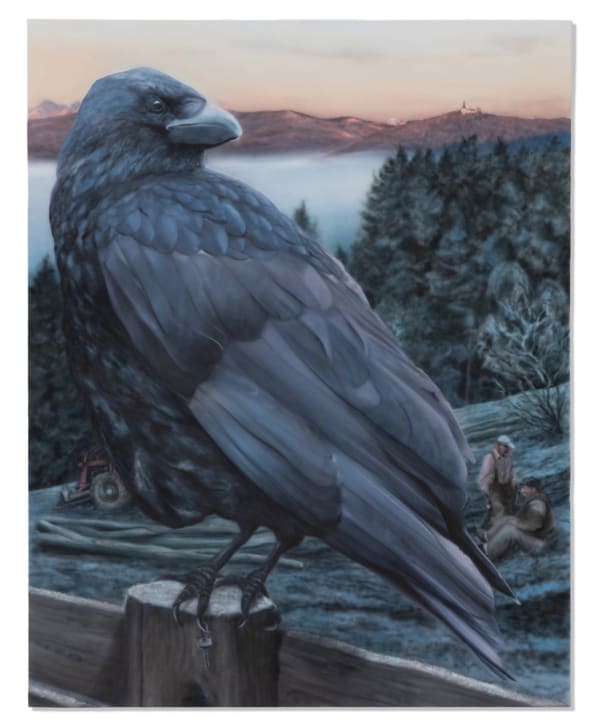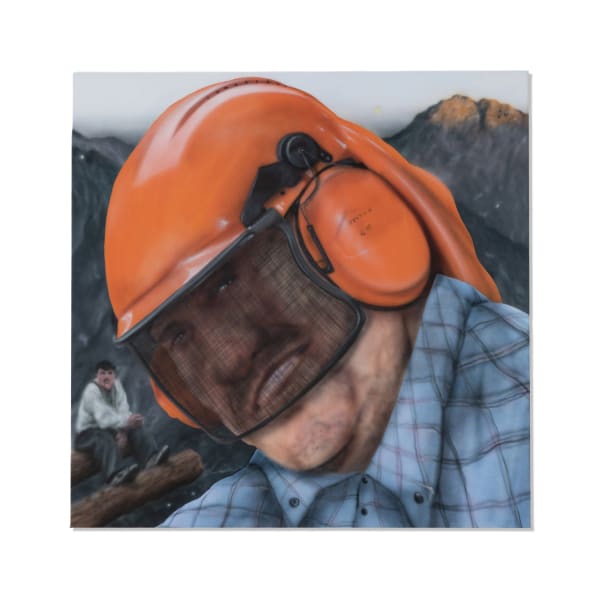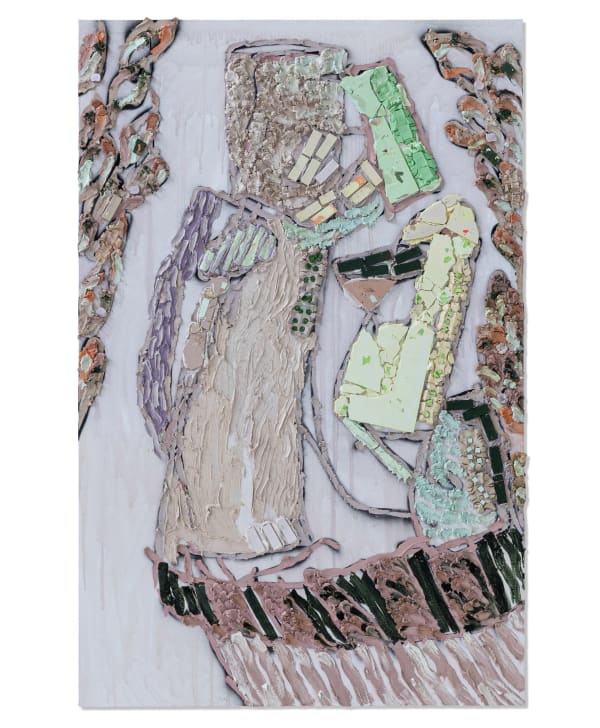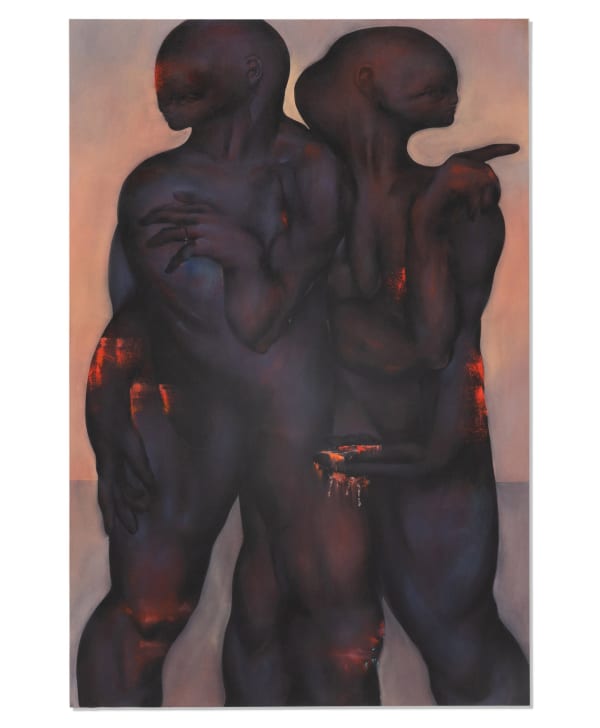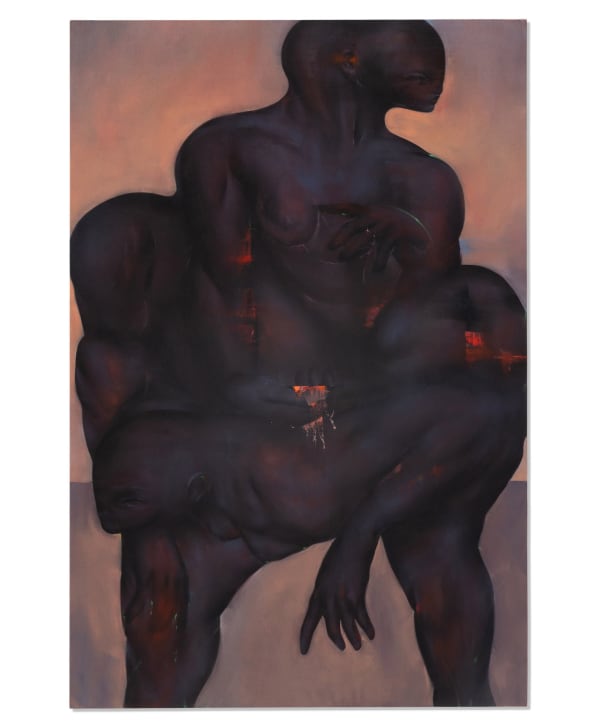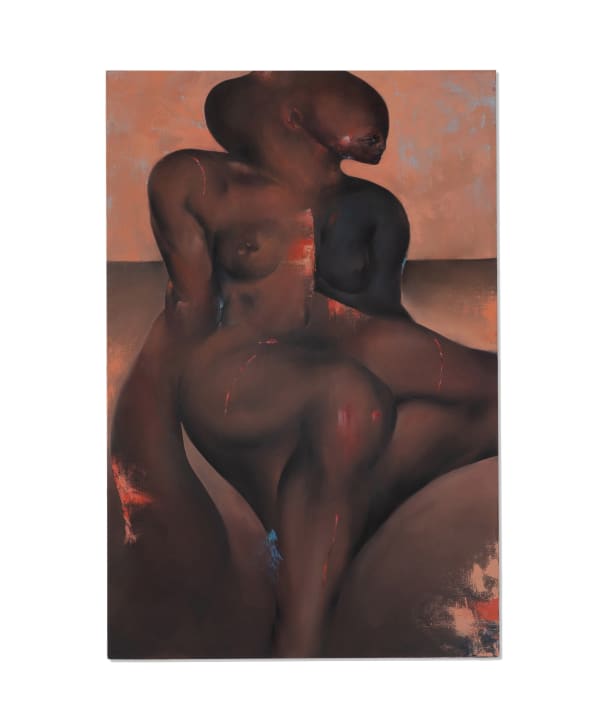Gado Gado: Exhibition with Martin Kacmarek, Erica Mao, Natacha Mankowski, Théo Viardin and Corydon Cowansage
Gado Gado’s complementary palette of sweet and sour, crisp and soft has made the Indonesian salad consisting of various ingredients a success around the globe. Gado Gado is also the name for Everyday Gallery’s opening exhibition of the new season. A group exhibition, Gado Gado presents five different artists that have a unique artistic voice and style. United in one show, these styles create a pleasant and playful contrast with one another. The show is curated to highlight the differences as well as the complementary nature of these artists.
Corydon Cowansage (1985, USA) is an up and coming name in the New York painting scene, with group and solo exhibitions at Sean Horton (Presents) among others. While her work is abstract, it is dominated by forms and shapes that are reminiscent of organic materials. This explains the liveliness of these paintings, which is intensified by the astute choice of colors. Cowansage’s work combines spontaneity and careful deliberation. Beginning with quick and spontaneous drawings with ink on paper, she then reworks the most interesting of these sketches, using acrylic paint on paper. Ultimately, those compositions are reworked once again on canvas. In the process the shapes become more abstract.
Having previously exhibited with Everyday Gallery at Art Rotterdam, Erica Mao (1994, USA) presents oil paintings on wooden panel at Gado Gado. At first sight Mao’s work looks like Cézanne on edibles: the colors are dark but intense, ghostly apparitions are wandering in the burred out landscapes. In Mao’s work, one can see the influence of classic Chinese painting. The build-up of the landscapes, the suppleness of its organic elements like the trees, are reminiscent of Chinese landscape scroll painters from the Song dynasty in the 13th century such as Ma Lin. Bringing together these diverging traditions, Mao develops a highly personal painterly vocabulary that is both familiar and refreshingly new.
Martin Kacmarek (1996, Slovakia) has exhibited his work in several galleries around Europe (Spain, Germany, Slovakia, …) and in the USA, now making his debut at Everyday Gallery. He distinguishes himself through his original and skilled use of airbrush technique. The smooth and subtle effect of his acrylic airbrush technique creates an eerie contrast with the composition technique he deploys, which seems like it was inspired by the tradition of collage and cut-up. Kacmarek paints uncanny portraits of birds, at times in combination with ordinary people in everyday situations. Many of these birds are poultry, like chicken or turkeys, or are otherwise are adapted to human environment, like crows or goose. The people that he portrays are engaged in activities that do not allow them to pose for a painting in a very conscious way. And yet, Kacmarek’s work often has an uncanny, estranging effect. Although by no means collages, the hard edges between the different layers and elements of his work do remind one of a collage. It allows Kacmarek to combine everyday elements in an all but ordinary way, resulting in highly unique portraits and stories.
Natacha Mankowski (1986, France) is a core artist of Everyday Gallery. Following up on her successful solo show in September 2021, Mankowski presents work from her new Ophite series. Based on her visit to Tinos, a small Greek island situated in the Aegean Sea known for its green marble, the Ophite series further develops Mankowski’s distinctive impasto technique to pay tribute to the titillating and radiant green color that this type of stone, also known as ophite, is known for. Mankowski’s work situates itself at the intersection of the natural environment and human excavation (and potential destruction) of that environment.The artist reworks, redevelops and translates the experience of seeing these otherworldly colors in their natural environment and in interaction with the sun, the sky and the sea in her own, unique painterly language. In doing so,she goes beyond aesthetic pleasure, the subtle aesthetic appeal of Mankowski’s work becomes an artistic means for reflecting on humanity’s impact on the natural world.
Based in Paris, Théo Viardin (1992, France) painterly work develops a speculative aesthetics that enables us to rethink and reconceptualize what it means to be human. The humanoid figures that populate his paintings appear to morph in different (nonhuman?) beings. Set against a dark but radiant background, the contours of these figures stretch out, as if something inside them is struggling to get out and express itself. The radiance that seems to emanate from these painting is, of course, partly due to the contrast between the dark figures that are portrayed and the bright backgrounds behind them. But the effect is also the result of the subtle way in whichViardin works a wide array of pigments in his paintings.Taking his inspiration from speculative fiction authors like Ursula K. Le Guin, Viardin’s humanoid figures gesture toward a narrative of a different kind of humanity, opening up to a different future.
Text by Bram Ieven


